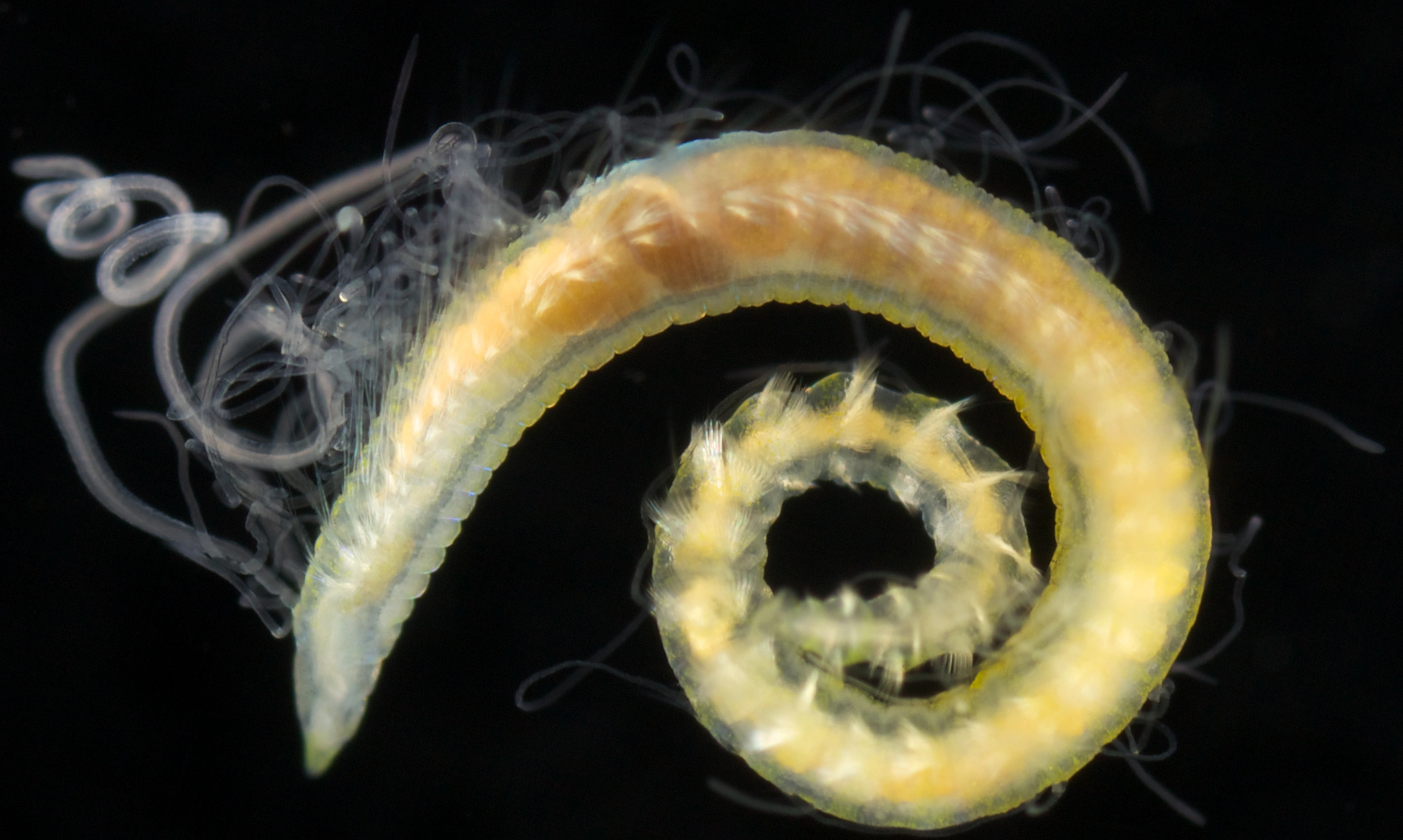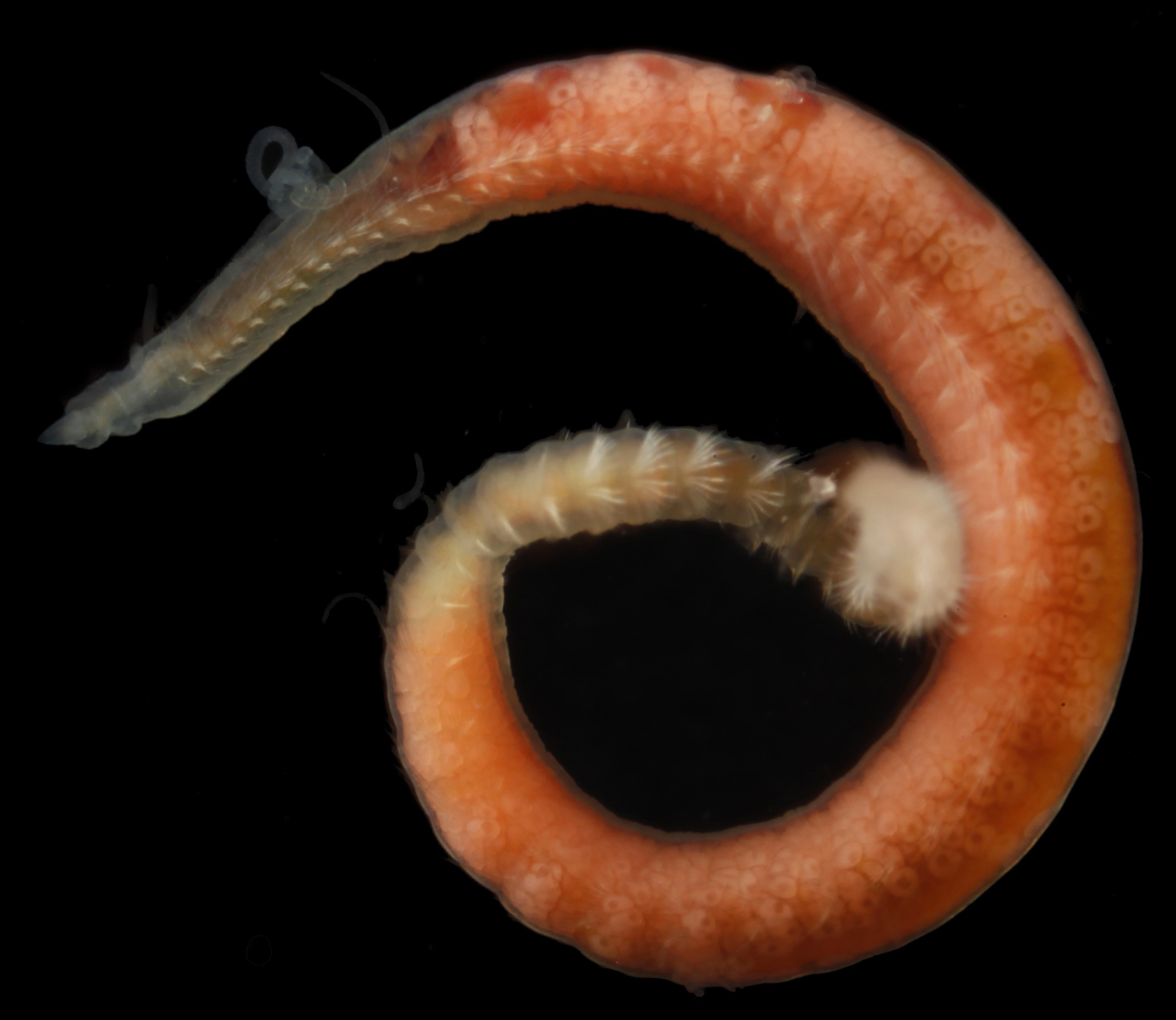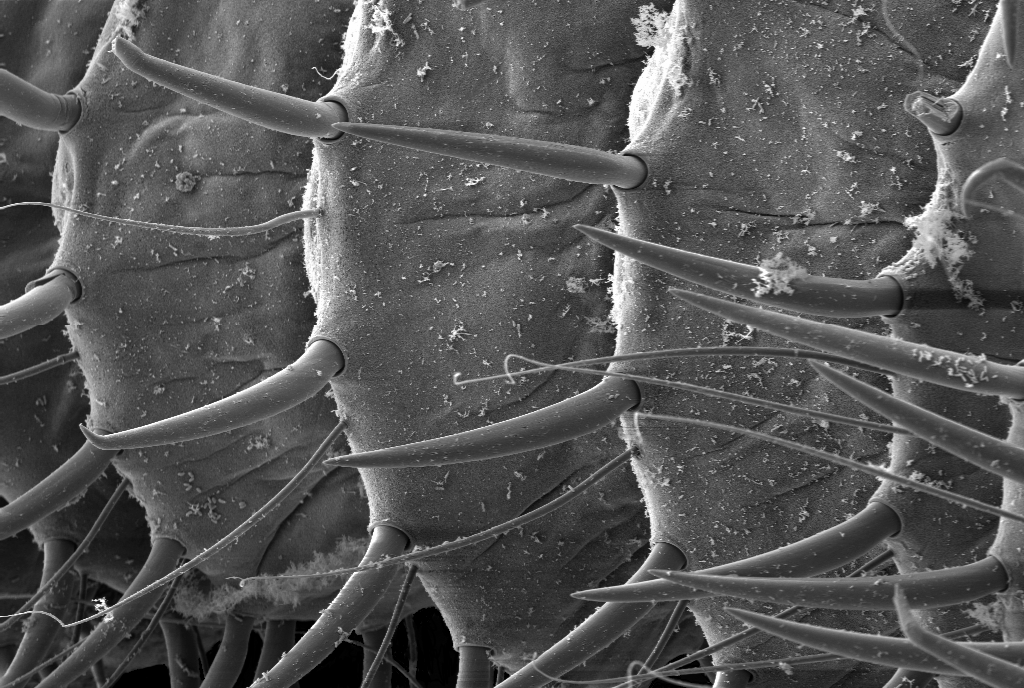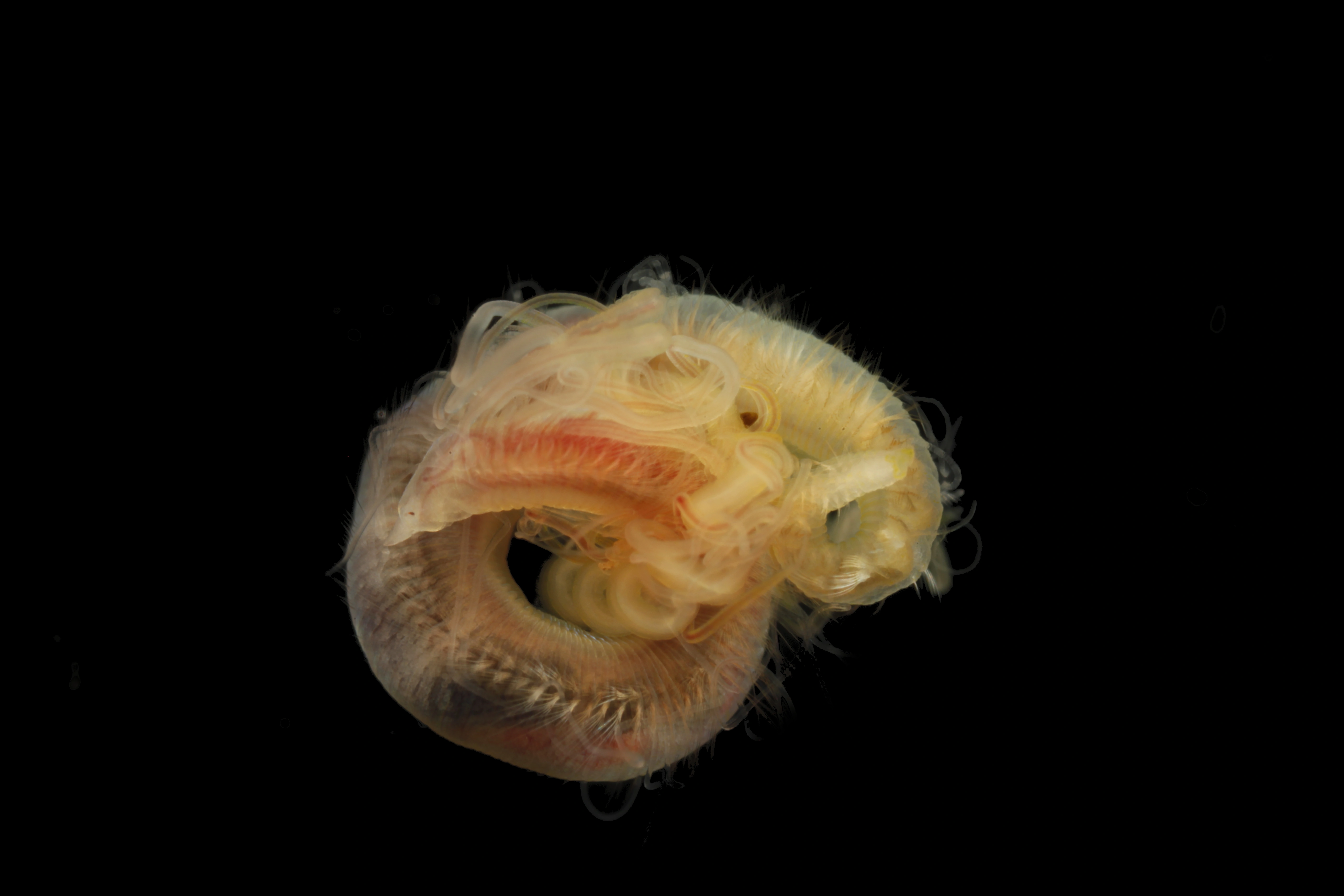Chaetozone pseudosetosa
Chaetozone pseudosetosa. A complete specimen with visible tentacles in lateral view.
Chaetozone pseudosetosa is a common cirratulid, found in the top layer of the sediments of natural and anthropogenic marine environments.
- Innhold
- Measurements
- Characteristics
- Look-alikes
- Biology, ecology and behaviour
- Habitat
- Recommended citation
Measurements
Up to 2 cm long.
Chaetozone pseudosetosa. A mature specimen with eggs, in lateral view.
Characteristics
This species is characterized by its large number of thin, filamentous branchiae along its body, a pair of thick tentacles near the head, and rings of spines encircling the posterior segments. Chaetozone pseudosetosa lacks eyes and has a cylindrical body with a tapering posterior end.
Chaetozone pseudosetosa. Scanning electron microphotography of the spines encircling the posterior segments.
Look-alikes
Another species of the genus Chaetozone can be found in Norwegian ports, although it is less common, Chaetozone zetlandica. Chaetozone zetlandica is easily distinguished from C. pseudosetosa by the presence of a pair of red eyes, and flat posterior segments.
Chaetozone zetlandica, with red eyes.
Biology, ecology and behaviour
Members of the genus Chaetozone burrow in the top layer of the sediment. They collect and feed on organic matter from the top layer of the sediment surface, using their tentacles.
Habitat
This species is mainly found in muddy sediments, sometimes in sand, silt or clay. It is common in northwest Europe from the English Channel to the Norwegian Sea, from shallow waters down to 160 m depth, sometimes in high densities.
Recommended citation
Grosse M. Chaetozone pseudosetosa Grosse, Capa and Bakken, 2021. www.artsdatabanken.no/Pages/313949. Downloaded <year-month-day>.



